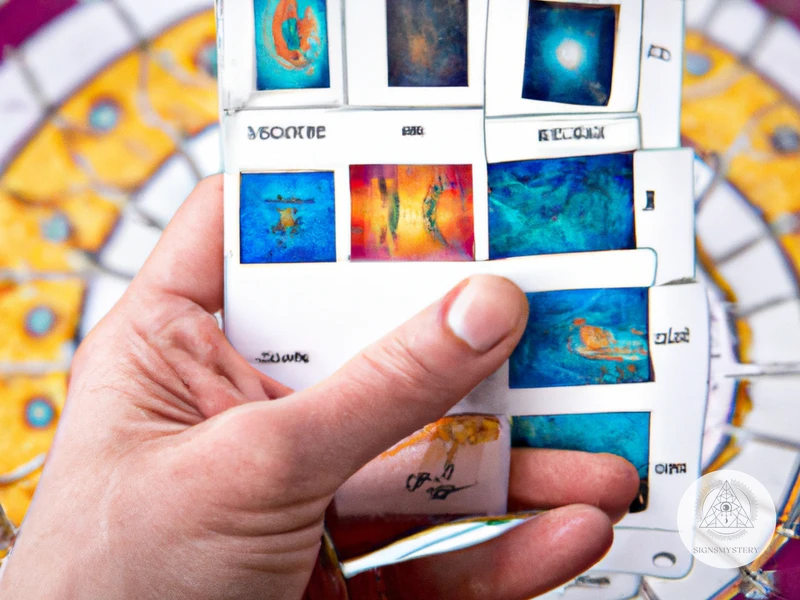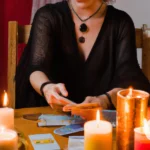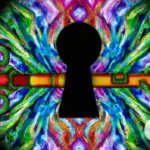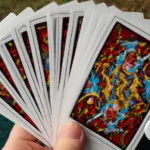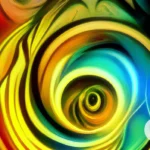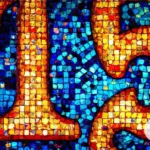Have you ever wondered how to gain deeper insights into your life? Perhaps you’ve tried tarot or astrology separately, but have you considered using them together? Tarot can provide guidance and clarity, while astrology offers a blueprint of your soul’s purpose. By combining these two powerful tools, you can tap into a new level of understanding and self-awareness. In this article, we’ll explore the basics of tarot and astrology, show you how to combine them step-by-step, and offer tips for interpreting your readings. Get ready to unlock new insights and connect with your inner wisdom.
What is Tarot?
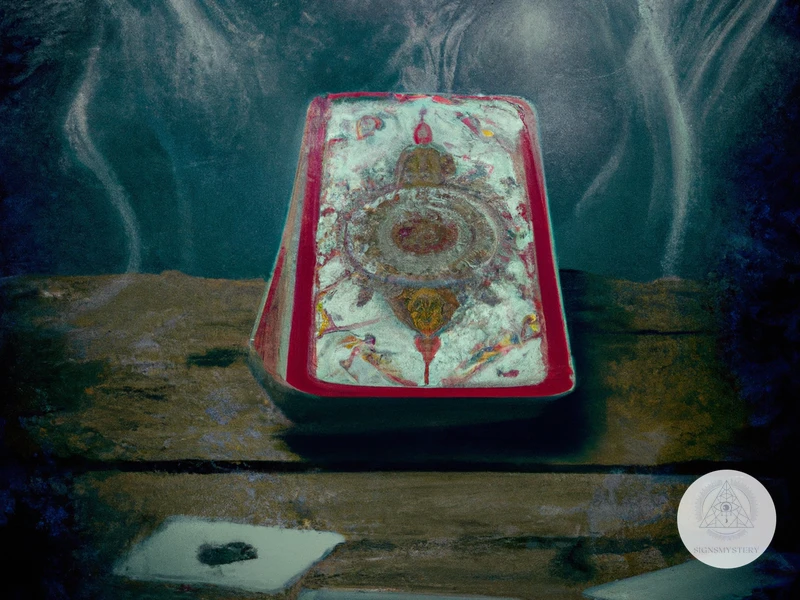
Tarot is a divination tool that uses a deck of 78 cards to gain insight into various aspects of a person’s life, including love, career, and spirituality. The Tarot deck is divided into two parts: the Major Arcana, which consists of 22 cards that depict archetypal energies and universal themes, and the Minor Arcana, which consists of 56 cards divided into four suits: Cups, Swords, Wands, and Pentacles. Each suit represents a different aspect of life and is associated with a specific element: Water, Air, Fire, and Earth, respectively. Tarot readings can be done in many ways and can be combined with other divination tools, such as astrology. Understanding astrological correspondences and symbolism can add depth and nuance to a Tarot reading, as well as provide new insights into the querent’s life. To learn how to combine Tarot and astrology, check out the Astro-Tarot Correspondences article on our website.
The Major Arcana
in Tarot is a set of 22 cards that represents significant life events and spiritual growth. Each card has its own unique image, name, and symbolism. The Major Arcana cards are often referred to as the “trump cards” or the “greater secrets” of the Tarot deck. The cards are numbered from 0 to 21 and often include traditional archetypes, biblical figures, and mythological characters. Below is a table of the Major Arcana cards, their associated number, name, and brief description:
| Card Number | Name | Description |
|---|---|---|
| 0 | The Fool | Represents new beginnings, spontaneity, and taking a leap of faith. |
| 1 | The Magician | Represents manifestation, power, and ingenuity. |
| 2 | The High Priestess | Represents intuition, reflection, and secrets. |
| 3 | The Empress | Represents fertility, nurturing, and abundance. |
| 4 | The Emperor | Represents authority, structure, and stability. |
| 5 | The Hierophant | Represents tradition, religion, and spirituality. |
| 6 | The Lovers | Represents harmony, love, and relationships. |
| 7 | The Chariot | Represents victory, confidence, and determination. |
| 8 | Strength | Represents inner strength, courage, and power. |
| 9 | The Hermit | Represents isolation, introspection, and wisdom. |
| 10 | Wheel of Fortune | Represents change, cycles, and fate. |
| 11 | Justice | Represents balance, fairness, and cause and effect. |
| 12 | The Hanged Man | Represents surrender, sacrifice, and letting go. |
| 13 | Death | Represents transformation, endings, and new beginnings. |
| 14 | Temperance | Represents balance, harmony, and moderation. |
| 15 | The Devil | Represents temptation, addiction, and materialism. |
| 16 | The Tower | Represents upheaval, chaos, and sudden change. |
| 17 | The Star | Represents hope, inspiration, and positivity. |
| 18 | The Moon | Represents emotions, illusions, and mystery. |
| 19 | The Sun | Represents happiness, success, and vitality. |
| 20 | Judgement | Represents reawakening, rebirth, and renewal. |
| 21 | The World | Represents completion, fulfillment, and a sense of unity with the universe. |
Understanding the symbolism and meaning of the Major Arcana cards is essential to interpreting Tarot readings that incorporate astrology. The Major Arcana cards are often associated with the various astrological signs, planets, and houses, and recognizing these associations can help a Tarot reader gain deeper insights into a person’s life events and spiritual growth. For more information about astro-tarot correspondences, check out this article.
The Minor Arcana
The Minor Arcana is the supporting cast of the Tarot deck, consisting of 56 cards divided into four suits: Cups, Pentacles, Swords, and Wands. These suits correspond to the four elements (water, earth, air, fire) and represent the various aspects of human experience.
Each suit contains Ace to Ten, plus a Page, Knight, Queen, and King. These cards can represent specific people, situations, or personality traits. They can also indicate different stages of growth and development in a person’s life.
Some readers view the Minor Arcana as less significant than the Major Arcana, but this is a misconception. The Minor Arcana cards reveal the nuances of a situation and provide details that may not be evident from the Major Arcana cards alone.
In Tarot and Astrology combined, the Minor Arcana cards can provide more precise information when they are interpreted along with Zodiac signs, planets, and houses. For example, The Nine of Pentacles, which is associated with material wealth and luxury, can be further understood when read in conjunction with Taurus, which is the Zodiac sign concerning upscale things.
To gain a deeper understanding of Minor Arcana cards and how they can work in tandem with Astrology, it’s crucial to expand your knowledge on astrology-tarot correlations. You can check out how to interpret Tarot Cards in the Astrological Houses or explore Astrological Tarot spreads to learn more about your character traits and path in life. By doing so, you will be able to combine the Major and Minor Arcana and their astrological counterparts to gain a more insightful and dynamic understanding of Tarot and Astrology that you can apply to your life and others in many situations.
What is Astrology?
Astrology is the study of the movements and relative positions of celestial bodies in order to gain insight into human affairs and natural phenomena. It is believed that the positions of the sun, moon, and planets at the time of a person’s birth can have an impact on their personality and life path. The study of astrology involves examining a person’s birth chart, which shows the positions of the planets and houses at the time of their birth. The zodiac signs also play a significant role in astrology, as they help to determine a person’s character traits and compatibility with others. By understanding these elements, individuals can gain a deeper understanding of themselves and the world around them. For those interested in combining astrology with tarot, there are many tarot spreads that incorporate astrological influences such as the /astrological-tarot-spreads/.
The Birth Chart
The Birth Chart in astrology is a representation of the position of the sun, moon, planets and the precise location of the individual at the time of their birth. It is often referred to as a natal chart, and is believed to provide insights into a person’s life, personality traits, strengths and weaknesses. The birth chart is used to understand the placement of celestial bodies and how those placements affect the individual.
The birth chart primarily consists of twelve houses, each associated with a different zodiac sign and governs a specific area of life. These houses represent different aspects of life such as career, relationships, family, wealth, and spirituality. The zodiac signs positioned in the houses also have an impact on a person’s life and personality.
The planetary positions in the birth chart are the most significant factors which help astrologers create a natal chart. The sun sign and moon sign are significant components of the birth chart and provide insights into a person’s personality, while the other planets such as Mercury, Venus, Mars, Saturn, Uranus, Jupiter, Neptune, and Pluto play a vital role in determining different aspects of life such as career, love life, and more.
In tarot, each card is associated with a particular planet, sign or astrological house. Studying and understanding the birth chart can aid with interpreting tarot readings. In essence, using tarot in conjunction with astrology can help provide insights and a level of detail that is otherwise difficult to obtain. Having a unique understanding of the birth chart can assist in determining which tarot cards are more relevant for specific readings.
Understanding the birth chart can be incredibly helpful when integrating tarot and astrology. It helps in the interpretation process and provides a wealth of information to draw upon. By combining the two methods, individuals can gain a unique perspective and deeper understanding of themselves and their daily lives.
The Zodiac Signs
The zodiac signs are an integral part of astrology and tarot. They represent the position of the sun in relation to the 12 constellations during an individual’s birth. Each zodiac sign has unique characteristics and traits, which can shed light on the personality of an individual.
Here are the 12 zodiac signs:
| Zodiac Sign | Date Range |
| Aries | March 21 – April 19 |
| Taurus | April 20 – May 20 |
| Gemini | May 21 – June 20 |
| Cancer | June 21 – July 22 |
| Leo | July 23 – August 22 |
| Virgo | August 23 – September 22 |
| Libra | September 23 – October 22 |
| Scorpio | October 23 – November 21 |
| Sagittarius | November 22 – December 21 |
| Capricorn | December 22 – January 19 |
| Aquarius | January 20 – February 18 |
| Pisces | February 19 – March 20 |
Each zodiac sign is associated with a ruling planet, an element, and a mode. The ruling planet dictates the personality traits and characteristics of each zodiac sign. The elements indicate the individual’s emotional and intellectual makeup, while the mode describes the overall approach to life.
It’s important to study these zodiac signs well and to understand their meaning in astrology and tarot. By doing so, you can gain a deeper insight into the characteristics of an individual, which can help in interpreting tarot readings. You can also use this knowledge to better understand yourself and those around you in your daily life.
If you want to learn more about how to incorporate astrology and tarot in your life, check out Tarot and Astrology in Daily Life. You can also learn how to interpret tarot cards in relation to the different astrological houses by reading How to Interpret Tarot Cards in Astrological Houses. Alternatively, if you want to gain a better understanding of the meanings behind the different tarot cards in relation to astrology, read Astrology and Tarot Meanings.
The Planets and Houses
In astrology, the planets represent different aspects of a person’s personality and life. Each planet has a unique energy and influence on our lives. Understanding the planets and their placement in the astrological birth chart can help us gain deeper insights into ourselves and our experiences.
The Sun is the most significant planet in astrology, representing our sense of self and identity. It also symbolizes creativity, vitality, and leadership. The Moon, on the other hand, represents our emotions, intuition, and subconscious mind. It also influences our moods and how we nurture ourselves and others.
Mercury is the planet of communication, logical thinking, and intelligence. It rules over technology, transportation, and commerce. Venus, the planet of love, beauty, and harmony, influences our relationships, values, and aesthetics. Mars, the planet of action and motivation, represents our ambition, drive, and sexuality.
Jupiter is the planet of growth, expansion, and abundance. It represents good fortune, optimism, and higher learning. Saturn, on the other hand, represents limitations, restrictions, and challenges. It teaches us discipline, responsibility, and accountability.
Uranus represents change, innovation, and rebellion. It influences our individuality and creativity. Neptune, the planet of dreams and spirituality, represents our connection to the divine and the unseen. It also influences art, music, and mysticism. Finally, Pluto represents transformation, power, and regeneration. It brings up deep-seated issues and helps us shed old patterns and beliefs.
The houses in astrology represent different areas of life and experiences. There are 12 houses, and each one corresponds to a different sign of the zodiac. The first house represents the self, identity, and appearance. The second house represents money, values, and resources. The third house represents communication, learning, and siblings. The fourth house represents home, family, and roots.
The fifth house represents creativity, romance, and children. The sixth house represents health, work, and service. The seventh house represents partnerships, relationships, and marriage. The eighth house represents transformation, shared resources, and sexuality.
The ninth house represents higher learning, travel, and philosophy. The tenth house represents career, reputation, and authority. The eleventh house represents social networks, groups, and aspirations. Finally, the twelfth house represents spirituality, endings, and hidden agendas.
Understanding the planets and houses can help us gain a deeper understanding of our astrological birth chart and how it influences our personality, experiences, and relationships. By combining tarot and astrology, we can gain even more profound insights into ourselves and our lives.
How to Combine Tarot and Astrology
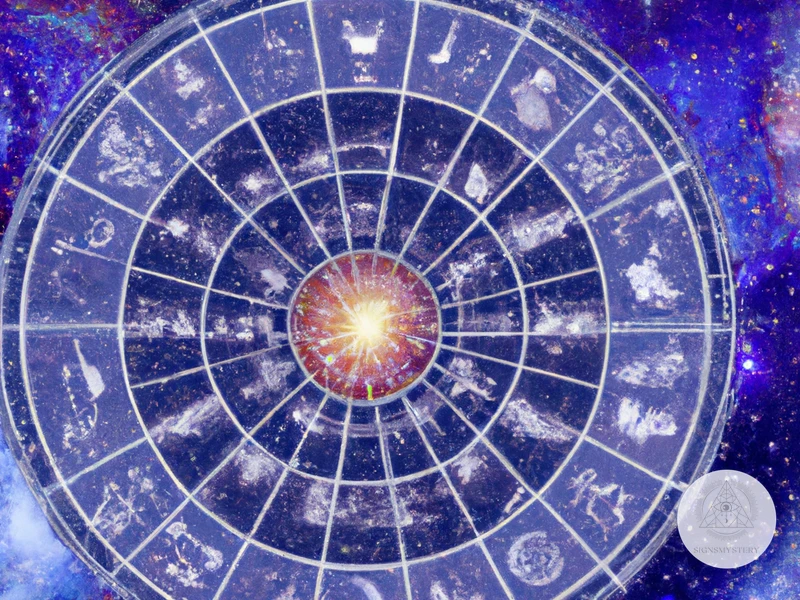
Combining Tarot and Astrology can add a new level of depth and insight to your spiritual practice. To get started, the first step is to choose a Tarot deck that resonates with you and familiarize yourself with the symbolism of the cards. Next, it’s crucial to understand your Birth Chart and learn about the planets and zodiac signs. Once you have a solid understanding of both Tarot and Astrology, you can assign each Tarot card to a planet and sign. Performing a Tarot reading using your Birth Chart as a guide can provide profound insights into your past, present, and future. The interpretations of the Tarot and Astrology symbols can be combined to create a cohesive narrative that can foster powerful personal growth and spiritual reflection.
Step 1: Choose a Tarot Deck
Step 1: Choose a Tarot Deck
Choosing the right Tarot deck is crucial when it comes to combining Tarot with Astrology. There are hundreds of Tarot decks available in the market, and each deck has a unique set of symbols and meanings associated with it. Here are some things to consider when choosing a Tarot deck:
- Traditional vs. Modern: Traditional Tarot decks, such as the Rider-Waite deck, follow a standard set of symbols and meanings. Modern Tarot decks, on the other hand, may have different interpretations, colors, and imagery.
- Personal Preference: It’s important to choose a Tarot deck that resonates with you personally. Take some time to browse different decks and choose the one that speaks to you on an intuitive level.
- Theme: Some Tarot decks follow a specific theme, such as fairies, animals, or mythology. If you have a specific interest or connection to a particular theme, consider choosing a deck that relates to that theme.
- Size: Tarot decks come in different sizes, from mini decks to larger, more traditional decks. Consider which size will be most comfortable for you to handle during a reading.
It’s important to note that any Tarot deck can be used for combining Tarot and Astrology, regardless of its style, theme, or size. The most important factor is that you feel a personal connection to the deck you choose. Once you’ve selected your deck, it’s time to move on to the next step: understanding your birth chart.
Step 2: Understand Your Birth Chart
In order to combine tarot and astrology, it is important to understand your own birth chart. A birth chart, also known as a natal chart, is a map of the sky at the exact moment of your birth. It shows the position of the planets, the twelve zodiac signs, and the twelve astrological houses. Interpreting your birth chart can provide insight into your personality, strengths, weaknesses, and life path.
To get started with understanding your birth chart, you will need to know your birth date, time of birth, and location of birth. This information can be used to calculate your chart using an online birth chart calculator or a professional astrologer.
Once you have your birth chart, take some time to explore each element:
| Element | Description |
|---|---|
| Zodiac Signs | The twelve astrological signs that rule different parts of the year and represent different personalities and energies. |
| Planets | The celestial bodies that move around the sun and represent different aspects of your personality and life experiences. |
| Houses | The twelve areas of life that are ruled by different zodiac signs and planets. Each house represents a different area of life from career to relationships to spirituality. |
Take note of any patterns or themes that emerge as you go through your birth chart. Are there certain zodiac signs or planets that appear frequently? How do the houses and signs interact with each other? What does your chart say about your strengths, weaknesses, and life path?
Understanding your birth chart will give you a foundation for combining tarot and astrology. By pairing the symbols and energies of the tarot cards with the symbols and energies of your birth chart, you can gain deeper insights into your innermost self and the world around you.
Step 3: Assign Planets and Signs to Tarot Cards
When it comes to combining tarot and astrology, the next step after understanding your birth chart and choosing a tarot deck is to assign planets and signs to tarot cards. This step is crucial for gaining deeper insights and making connections between astrology and tarot.
Assigning planets: Each tarot card is associated with one or more planets based on its symbolism and meaning. For example, The Magician card is often linked with the planet Mercury, which represents communication and intelligence. The Emperor card, on the other hand, is associated with the planet Mars, which represents power and authority.
To assign planets to tarot cards, you can use a tarot astrology correspondences chart or simply refer to your own knowledge of astrology. Keep in mind that some tarot readers may assign different planets to the same cards based on personal interpretation.
Assigning signs: In addition to planets, each tarot
Subscribe to Our Newsletter
Sign up to receive the latest news and updates.
To assign signs to tarot cards, you can use a tarot astrology correspondences chart or simply refer to your own knowledge of astrology. Keep in mind that some tarot readers may assign different signs to the same cards based on personal interpretation.
Remember that assigning planets and signs to tarot cards is not an exact science, but rather a way to deepen your understanding of both tarot and astrology. Play around with different associations and see what resonates with you in your readings.
Step 4: Perform a Reading
Performing a reading using tarot and astrology can be a transformative experience that can offer valuable insights. To begin a reading, prepare a comfortable space and clear your mind of any distractions. Shuffle the cards while focusing on your question or situation. Once you feel ready, lay out the cards in a spread that aligns with the question or area of life you want to focus on.
For instance, you can use the Celtic Cross spread, which is a common spread for combining astrology and tarot. This type of spread includes 10 cards that provide a comprehensive overview of your situation. The first card represents the present situation, while the second card represents any obstacles that may be in your way. The third card represents the past, and the fourth card represents the future. The fifth card represents your inner thoughts and feelings, while the sixth card represents your external environment.
The seventh card represents your role in the situation, and the eighth card represents the people who are involved in the situation. The ninth card represents your hopes and fears, while the tenth card represents the outcome or resolution. As you lay out the cards, keep your question or situation in mind and focus on your breath to help you stay grounded and centered.
Once the spread is complete, take a moment to look at each card and interpret its meaning based on its position and the astrological correspondences you assigned. Use your knowledge of astrology and tarot symbolism to understand the message of each card and how it relates to your situation. Pay attention to any intuitive insights or feelings that arise as you look at the cards, as these may provide additional information or guidance.
Finally, use your knowledge of tarot and astrology to pull it all together and create a cohesive story or message about your situation. You may find that the cards provide new perspectives or information that you had not considered before. Use this information to make informed decisions and take action towards creating the outcomes you desire.
Interpreting Tarot and Astrology Together
Combining Tarot and Astrology can provide deeper insights into a person’s life. To effectively interpret both practices, it’s important to look for connections and patterns between the cards and the birth chart. Pay attention to the astrological symbols present in the Tarot cards and how they interact with the planets and signs in the birth chart. Additionally, seek out common themes and symbolism between the Tarot and astrology. By analyzing the patterns and interpreting the symbols, a Tarot and Astrology reading can reveal an individual’s strengths, weaknesses, desires, and obstacles. Don’t be afraid to rely on your intuition and personal interpretations as well when interpreting Tarot and Astrology together. The possibilities and insights are endless when combining these two powerful divination methods.
Example Reading
To illustrate how to use tarot and astrology together, let’s do an example reading. In this reading, we will be exploring your current state of emotional well-being and how to improve it.
First, draw three tarot cards. The first card will represent your emotions at the present moment, the second card will represent the challenges you are facing, and the third card will represent the actions you can take to improve your emotional well-being.
Let’s assume the first card drawn is the Five of Cups. This card shows a person in a state of sadness and grief, looking at three spilled cups while two other cups remain standing. This indicates that you are feeling a sense of loss and regret, dwelling on what has been lost rather than what is still available to you.
The second card drawn is the The Devil, which represents your current challenges. This card portrays a figure chained to the Devil, surrounded by other figures chained to him. This card suggests that you are stuck in a cycle of negative thoughts and emotions, perhaps even feeling trapped in a destructive pattern.
Lastly, the third card drawn is the The Sun which represents the actions you can take to improve your emotional well-being. This card shows a child with arms outstretched under a bright sun and signifies joy, positivity, and optimism. This card is advising that you must work towards new and hopeful beginnings that foster your creativity and growth.
Now, let’s turn to astrology to gain further insight into this reading. Based on your birth chart, we can see that your moon is in Scorpio. Scorpio is a highly emotional sign and can often delve into deep introspection and dwelling on past hurts. This adds further depth to the Five of Cups in the reading.
Additionally, with your Mars in Cancer, your natural instincts are to seek comfort and security. This could be contributing to your feeling trapped by negative patterns in your life, as you may be clinging to routine and familiarity rather than embracing change.
By combining tarot and astrology, we can see a clearer picture of your emotional state and the actions you can take to improve it. The Sun card suggests that you need to shed negativity and embrace new beginnings. With knowledge of your birth chart, you can understand some of the challenges and tendencies that may be holding you back from making positive changes in your life.
Common Symbolism
When it comes to combining Tarot and Astrology, it’s important to note the symbolism that can be found in both practices. There are several common symbols that appear in both Tarot and Astrology, allowing for a deeper understanding and interpretation of readings.
Elemental Associations: One common symbol in both Tarot and Astrology is that of the four elements – earth, air, fire, and water. In Tarot, each suit in the Minor Arcana is associated with one of these elements. Similarly, in Astrology, each zodiac sign is associated with one of the elements. Understanding the elemental associations can help provide insight into the themes and energies present in a reading.
The Sun and Moon: Both Tarot and Astrology feature symbolism related to the sun and moon. In Tarot, The Sun card represents success and vitality, while The Moon card relates to intuition and the unknown. In Astrology, the sun and moon represent the conscious and unconscious self, respectively. Paying attention to the presence of these symbols in a reading can provide insight into the balance between the conscious and unconscious aspects of the querent.
The Fool: Another common symbol in both practices is The Fool. In Tarot, The Fool represents new beginnings and taking risks, while in Astrology, the symbol is associated with the planet Uranus and represents unconventional thinking and change. Paying attention to The Fool in a reading can provide insight into areas where the querent may need to embrace change or take a risk.
Planetary Associations: Just as each zodiac sign is associated with a particular planet, each Tarot card can also be connected to a planet. Understanding these planetary associations can help provide deeper insight into the themes and energies present in a reading. For example, The Magician card in Tarot is often associated with the planet Mercury, which relates to communication and intellect.
By paying attention to the common symbolism found in both Tarot and Astrology, practitioners can gain a deeper understanding of the themes and energies present in a reading. Incorporating these symbols into interpretations can provide valuable insights and guidance for querents seeking guidance in their lives.
Conclusion
In conclusion, using tarot and astrology together can offer profound insights and a deeper understanding of one’s self and the world around them. By combining tarot and astrology, one can gain an intuitive understanding of their birth chart and access the wisdom of the tarot to help guide them on their path.
Tarot readings and astrology can help us understand our past, present, and future, and gain a different perspective on challenging situations. It can also provide us with a greater understanding of ourselves, our emotions, and the relationships we have with others.
Remember that both tarot and astrology are complex systems, and it may take time and practice to become proficient in them. However, with patience and dedication, these tools can be a valuable resource for gaining deeper insights into our lives.
So if you’re interested in exploring tarot and astrology together, take the time to learn about each system individually, and then start experimenting with bringing them together in your readings. With an open mind and a willingness to learn, you can discover a world of insights and guidance that will help you on your journey towards self-discovery and personal growth.
Frequently Asked Questions
1. What does it mean when a tarot card corresponds to a certain zodiac sign?
When a tarot card corresponds to a zodiac sign, it means that the card’s symbolism is associated with the characteristics and themes of that sign.
2. Can tarot be used to predict the future?
Tarot is not meant to predict the future in a concrete way, but rather to offer guidance and insight into potential outcomes based on the energies and choices in the present moment.
3. Do I need to know my exact birth time to use astrology with tarot?
Knowing your exact birth time will provide more accurate information in astrology, but it is not necessary to use it in combination with tarot.
4. How do I choose a tarot deck?
Choose a tarot deck that speaks to you aesthetically and resonates with your intuition. There are many different styles and interpretations of tarot, so find one that clicks with you.
5. Is astrology a form of divination like tarot?
Astrology can be considered a form of divination, as it uses symbols and interpretations to gain insight into the energies and themes of a person or event.
6. Can tarot readings be done for someone else?
Yes, tarot readings can be done for others. It is important to get their consent and approach the reading with empathy and objectivity.
7. What if I don’t resonate with the zodiac sign that corresponds to a tarot card?
Even if you don’t resonate with a particular zodiac sign, the symbolism within the tarot card can still offer valuable insights and guidance.
8. How do I interpret the combination of a tarot card and an astrology sign?
You can interpret the combination by looking at the characteristics of the zodiac sign and how they correspond to the theme and symbolism of the tarot card. Use your intuition and personal associations as well.
9. How do I incorporate astrology into a tarot reading?
You can incorporate astrology by assigning a zodiac sign or planet to each card and using that as a basis for interpretation and analysis.
10. Can tarot and astrology help me make major life decisions?
Tarot and astrology can offer guidance and insight into potential outcomes and energies surrounding a decision, but the final decision is ultimately up to the individual and their free will.

